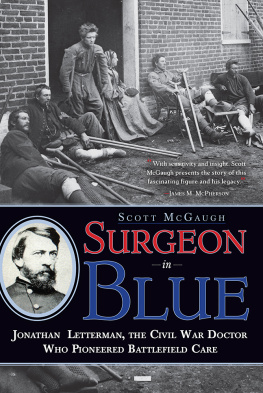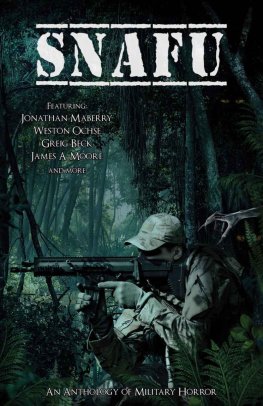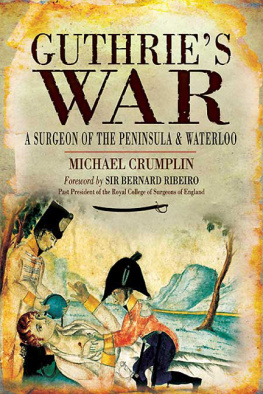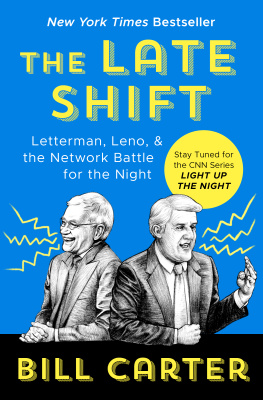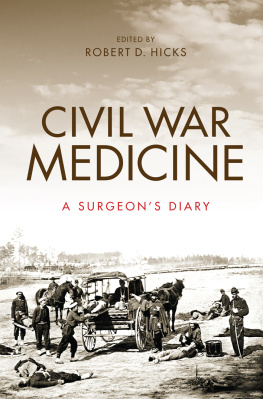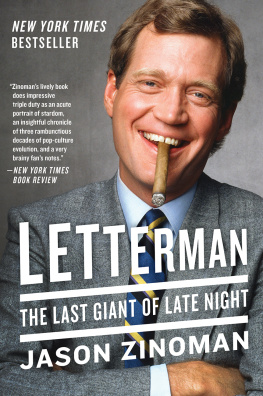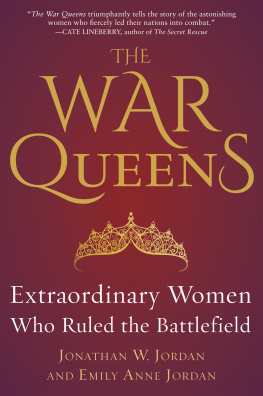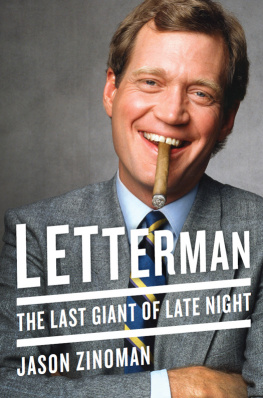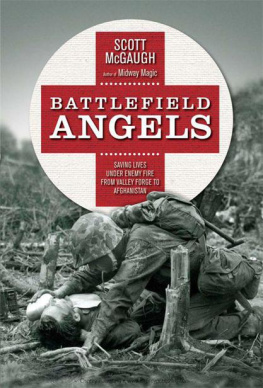S URGEON
IN B LUE
Also by Scott McGaugh:
Midway Magic
Midway Memories
USS Midway: Americas Shield
Battlefield Angels: Saving Lives Under Enemy Fire
from Valley Forge to Afghanistan
S URGEON IN
B LUE
Jonathan Letterman,
The Civil War Doctor
Who Pioneered Battlefield Care
Scott McGaugh

Copyright 2013 by Scott McGaugh
All Rights Reserved. No part of this book may be reproduced in any manner without the express written consent of the publisher, except in the case of brief excerpts in critical reviews or articles. All inquiries should be addressed to Arcade Publishing, 307 West 36th Street, 11th Floor, New York, NY 10018.
Arcade Publishing books may be purchased in bulk at special discounts for sales promotion, corporate gifts, fund-raising, or educational purposes. Special editions can also be created to specifications. For details, contact the Special Sales Department, Arcade Publishing, 307 West 36th Street, 11th Floor, New York, NY 10018 or arcade@skyhorsepublishing.com.
Arcade Publishing is a registered trademark of Skyhorse Publishing, Inc., a Delaware corporation.
Visit our website at www.arcadepub.com.
Visit the authors website at www.scottmcgaugh.com
10 9 8 7 6 5 4 3 2 1
Library of Congress Cataloging-in-Publication Data
McGaugh, Scott.
Surgeon in blue : Jonathan Letterman, the Civil War doctor who pioneered battlefield care / Scott McGaugh.
pages cm
Includes bibliographical references and index.
ISBN 978-1-61145-839-8 (hard cover : alk. paper)
1. Letterman, Jonathan, 1824-1872. 2. SurgeonsUnited StatesBiography. 3. United States. ArmySurgeonsBiography. 4. United StatesHistoryCivil War, 1861-1865Medical care. 5. Medicine, MilitaryUnited StatesHistory19th century. 6. United States. Army of the PotomacBiography. I. Title.
E621.M36 2013
973.775092dc23
[B]2013010329
Printed in the United States of America
To all in the military medical corps
who bring our sons and daughters home
It requires a man with a steel nerve and
a case-hardened heart to be an army surgeon.
James Houghton, 4th Maine Infantry
CONTENTS
ACKNOWLEDGMENTS
E ach time I embark on a book project, I find myself enormously grateful for the many people and organizations dedicated to preserving our nations history. I am reminded just how much of history binds our cultural identity. Our history is woven into the fabric of our culture, and without its preservation, the tapestry of our values, beliefs, and shared experience would unravel.
When I first approach a books topic, the vista it offers can be as broad as it is overwhelming. An endless number of paths stretch out before me. Some lead to unexpected forks and side paths that yield enormous treasure. Others become box canyons. Surgeon in Blue is no different from my other books in this respect, for its research led me to rural towns, dusty archives, and generous strangers who quickly became kindred spirits, colleagues, and sometimes good friends.
Many people helped me set a research course at the outset. Brett Kelley and Janice Mullin of the National Civil War Museum suggested several routes of inquiry. Renowned Civil War devotee Michael Echols was a marvelous online resource, while Dr. Dale C. Smith, professor of medical history at the Uniformed Services University of the Health Sciences, articulated the challenges and opportunities inherent in my book concept.
The gracious people of Canonsburg, Pennsylvania, were remarkably helpful. Michael McCoy, Phi Kappa Psis historian; Jim Herron of the Jefferson College Historical Society; local historians Maryann Magra and Gina Nestor; and Jefferson Medical Colleges archivist, Michael Angelo, all were as responsive to a strangers request for information as they were supportive.
When I reached the National Civil War Medicine Museum in Frederick, Maryland, I discovered a dedicated group of people devoted to this largely overlooked aspect of Civil War history. Gordon Dammann, a retired dentist in Illinois, founded the museum. He and his wife, Karen, welcomed me into their home, a den of irreplaceable historical documents and artifacts that included Jonathan Lettermans desk. George Wunderlich, Terry Reimer, and Adele Air at the museum were enormously helpful.
When my odyssey reached Fredericksburg, staff historian Donald Pfanz provided letters, diaries, and reports. Beth Malmquist and Jake Struhelka at the Chatham House extended personal courtesies, as did Randy Washburn, Rebecca Welker, and David Elrod at the Fredericksburg Visitor Center. Chief historian John Hennessys review of the manuscript was greatly appreciated.
At Gettysburg, Phil Lechak provided a personal and inspirational tour of the battlefield. To sit in a forest clearing where Lettermans surgeons treated bleeding men took my breath away. Imagining the cries of battle brought tears. Dru Anne Neil connected me with historian John Heiser, who provided archival Gettysburg materials and later offered manuscript feedback. Gettysburg guide Tim Fulmer clearly spent a great deal of time reviewing and improving the Gettysburg chapter.
Meanwhile, other strangers became greatly appreciated colleagues. Marjorie R. Bardeen provided key historical perspective from the Lancaster Historical Society, while David Haugaard, Sara Heim, and Don Rolph at the Pennsylvania Historical Society in Philadelphia delivered a treasure trove of historical records otherwise out of my reach.
When the odyssey reached California, Joe Sanchez of the National Archives in San Francisco and Dr. Terence Allen, who wrote a history of the San Franciscos coroners office, provided insights I never would have developed. Medical history author John Haller was especially helpful in reviewing the manuscript from the larger military medicine perspective.
Of course, all this was to document Jonathan Lettermans lifes path and legacy. Regrettably, almost none of his personal papers remain. Only a handful of official reports and some handwritten notes have been found. Graphologist Sheila Kurtz was enormously helpful in reading between the lines and in helping me develop a more personal understanding of one of the Civil Wars great unsung heroes.
None of their contributions would have seen the light of day without the sage counsel of my agent, Scott Mendel, and the unerring editing and manuscript polishing by Arcade Publishings Cal Barksdale. Finally, as I write this on Valentines Day, 2013, I know in my heart that each of my books has been made possible only by the unwavering support of Marjorie, my best friend, wife, and mother of my son.
I am indebted to all who helped me chart this course of discovery. Each has contributed to the preservation of an important part of our nations military history. Thus, each has added to our understanding of who we are as Americans.
INTRODUCTION
We are almost worked to death.
O ne out of nine of Americas sons, brothers, and fathers fought each other in the Civil War. The human carnage was unimagined. For many, decades passed before the scars began to fade. Our civil war has been well chronicled, from its orders of battle to its sociological implications. Its history, one hundred fifty years later, is well preserved through the wealth of contemporary first-person accounts, a remarkable compilation of military medicines medical records, and unending study and analysis in the ensuing fifteen decades.
I have always been fascinated by the building blocks of history, the individual human experience.

